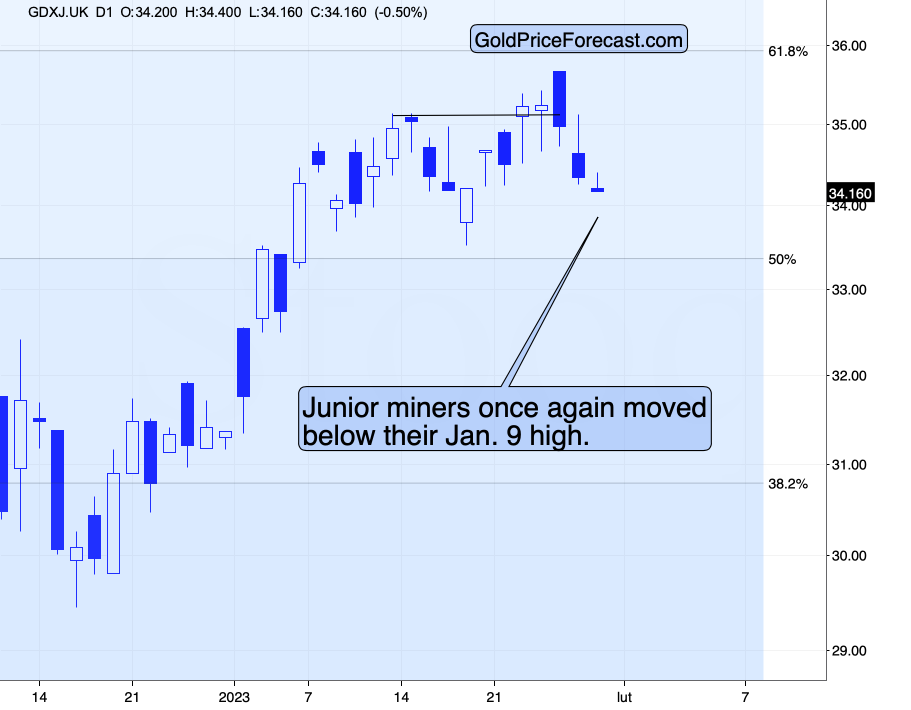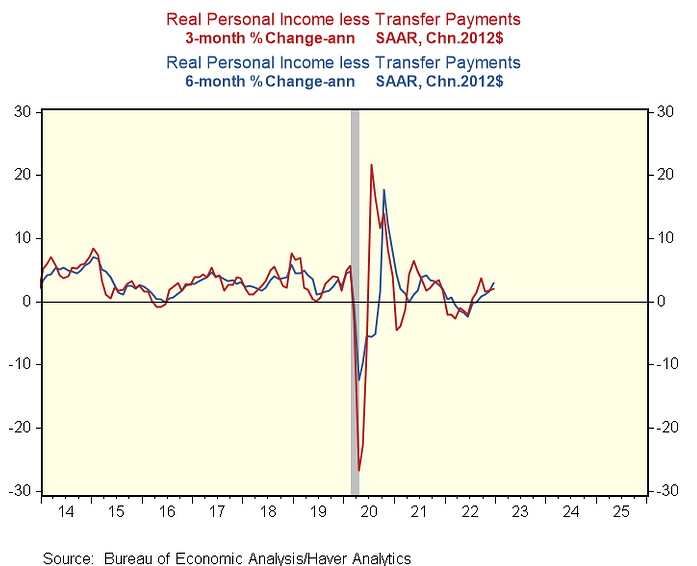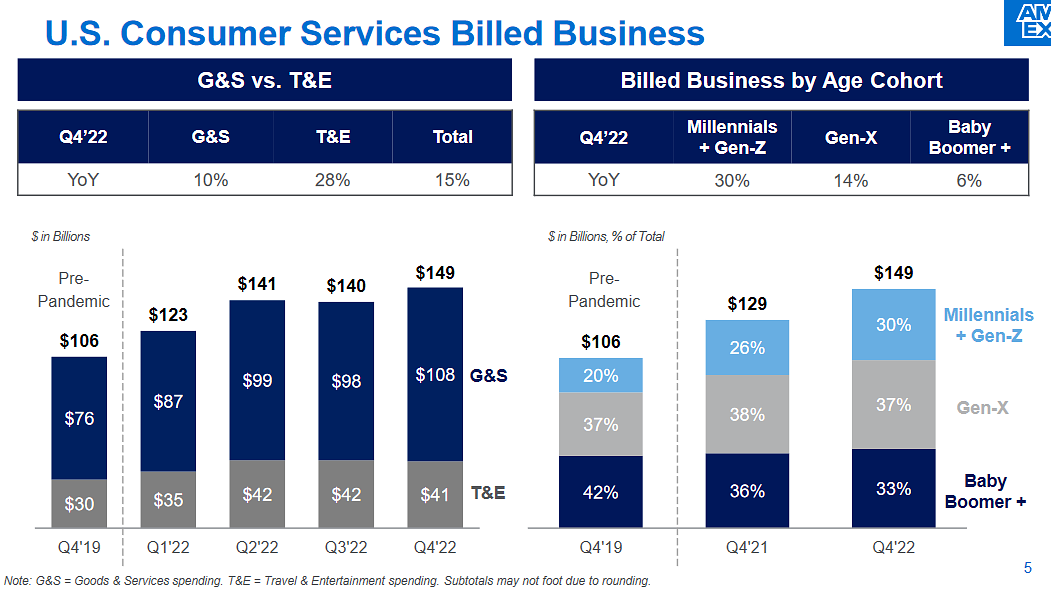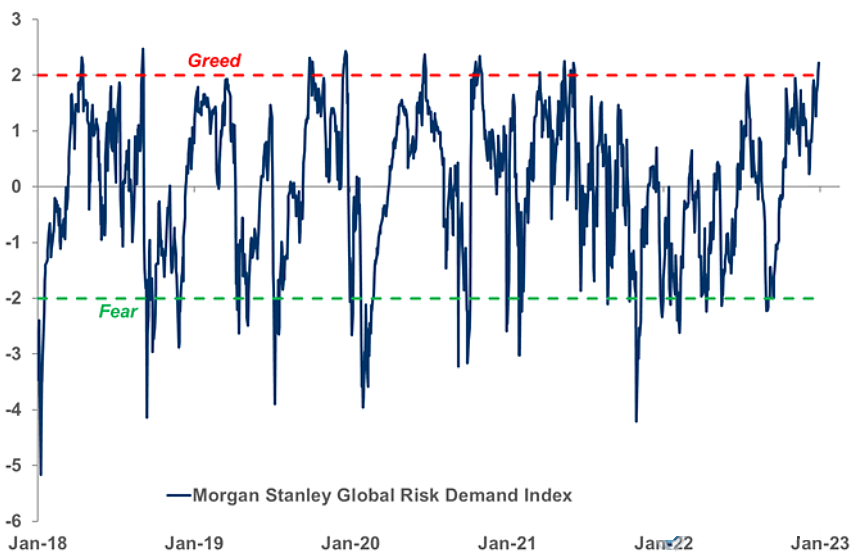Briefly: in our opinion, full (300% of the regular position size) speculative short positions in junior mining stocks are justified from the risk/reward point of view at the moment of publishing this Alert.
The no-action action continues in the precious metals sector, so there is once again little to report on the technical front. Gold is moving lower after another failed attempt to rally.
Instead of a powerful rally, we saw a move back below the 2011 high – the breakout never held, and it continued to be invalidated after each attempt.
Interestingly, junior miners continue to decline in today’s London trading, which indicates that the rally in the precious metals sector has most likely burned itself out.
Not only are the junior mining stocks below their mid-January 2023 high, but they actually moved below their earlier high – the Jan. 9 top. They are underperforming gold, and that’s – simply put – bearish.
This means that everything that I wrote in last Thursday’s extensive analysis remains up-to-date. And the outlook for the precious metals sector remains bearish for the following weeks and months.
Having said that, let’s take a look at the markets from a more fundamental point of view.
Has Gold’s Tide Turned?
While gold ended the day roughly flat on Jan. 27, mining stocks were major laggards, despite the S&P 500’s rally. In addition, with silver unable to hold $24 and the USD Index showing signs of forming a bottom, a reversal of fortunes could be on the horizon.
For example, Danske Bank analysts wrote on Jan. 27:
“To the extent central banks next week (primarily Fed, ECB) deliver a fairly firm hawkish guidance – especially when taking into account the last quarter's easing of financial conditions – we think a long USD position is beginning to look appealing again, perhaps even from a tactical perspective. Either way next week could prove pivotal for the global investment environment that will face us for the rest of February.”
They added:
“As explained over the last weeks, we still have a strategic bearish bias for the EUR/USD even if our tactical conviction is less clear.”
For context, “strategic” means over the medium term, while “tactical” means over the short term.
Thus, this week is riddled with market-moving events and volatility could be amplified. We have the Fed and ECB monetary policy meetings. There are also PMIs, nonfarm payrolls, and earnings from heavyweights like Apple, Amazon and Alphabet. As a result, the cross-asset implications could be material.
Despite that, the USD Index has demonstrated relative strength in recent days, and its inability to decline amid the ‘soft landing’ momentum and economic data speaks volumes. Furthermore, with looser financial conditions only spurring more inflation, Fed Chairman Jerome Powell needs to push back against these developments to avoid exacerbating the problem.
Please see below:
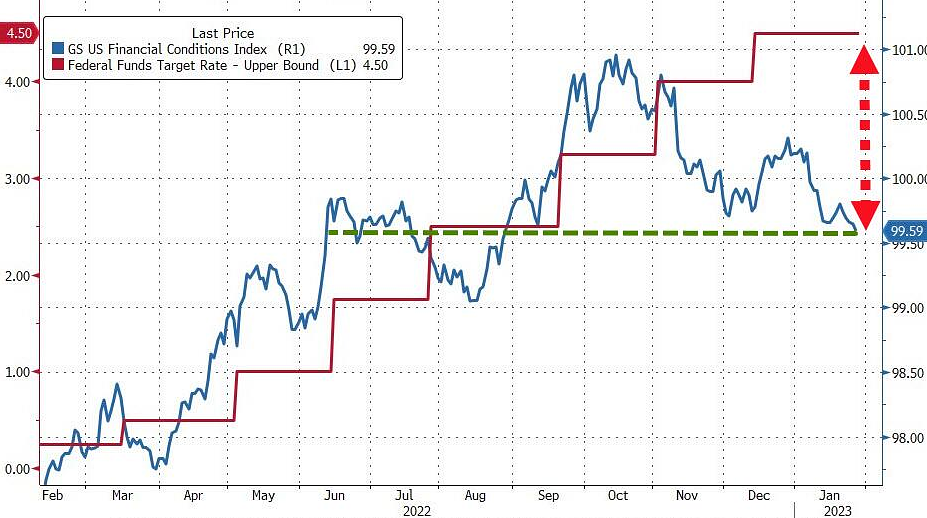 To explain, the red line above tracks the U.S. federal funds rate (FFR), while the blue line above tracks the Goldman Sachs Financial Conditions Index (FCI). If you analyze the movement of the blue line, you can see that financial conditions have eased materially in recent months, which helped uplift the PMs.
To explain, the red line above tracks the U.S. federal funds rate (FFR), while the blue line above tracks the Goldman Sachs Financial Conditions Index (FCI). If you analyze the movement of the blue line, you can see that financial conditions have eased materially in recent months, which helped uplift the PMs.
Conversely, the blue line’s peak in September and October occurred alongside the 2022 lows for gold, silver and mining stocks; and with a higher FCI needed to curb inflation, a dovish Powell would only worsen the situation. Therefore, it’s in his best interest to reverse this trend, and a realization is bullish for the USD Index and real yields, and bearish for the PMs.
To that point, we noted on Jan. 5 that the FOMC’s latest monetary policy minutes emphasized the pitfalls of easier financial conditions.
Please see below:
Likewise, with signs of reversals becoming more prevalent, Bank of America’s Chief Investment Strategist Michael Hartnett sees a narrative shift forthcoming in the days and weeks ahead. He wrote on Jan. 27:
“All signals [suggest a] hard landing will occur in 2023; but another tightening of financial conditions this spring may be required to tip a U.S. economy currently growing >7% in nominal terms into the recession the consensus craves.”
So, with Bank of America expecting that a re-acceleration in inflation will reverse investors’ rate-cut expectations, he told clients that the S&P 500 should be sold in the 4,100 to 4,200 range as the next leg lower is near. For context, the S&P 500 hit an intraday high of 4,094 on Jan. 27.
Please see below:
On top of that, while lower energy prices have helped reduce headline inflation recently, the deceleration has led to an increase in Americans' real (inflation-adjusted) incomes. Although, we warned throughout this cycle that demand was the primary driver of inflation, and higher real incomes are bullish for consumption.
Please see below:
To explain, the red and blue lines above track the three and six-month percentage changes in real personal income minus transfer payments (government benefits). If you analyze the right side of the chart, you can see that the metrics have been rising for the last six months and are up by an annualized rate of 2.9%. Thus, while the pivot crowd proclaims that a destitute consumer will allow for a dovish 180, the realities of near-record-high wage inflation tell a different story.
Speaking of which, American Express – one of the largest U.S. credit card issuers – released its fourth-quarter earnings on Jan. 27. CFO Jeff Campbell said during the Q4 conference call:
“Starting with our largest segment, U.S. consumer billings grew 15% in the fourth quarter, reflecting the continued strength and spending trends from our premium U.S. consumers. Our focus on attracting, engaging, and retaining younger cohorts of cardmembers to our value propositions drove the 30% growth in spending from our millennial and Gen Z customers.”
He added:
“Across all customer types, T&E spending momentum remained particularly strong in the fourth quarter, while we also saw a nice sequential growth in the amount of goods and services spending versus last quarter.”
Please see below:
To explain, the figures at the top left of the chart above show that consumers’ goods & services (G&S) spending increased by 10% year-over-year (YoY) in Q4, while travel & entertainment (T&E) was up by 28%. In addition, the figures at the top right show that spending was also resilient across different age groups. As a result, the fundamentals continue to unfold as expected, and the crowd underestimates how high the FFR needs to rise to suppress demand and normalize inflation.
For context, we wrote on Mar. 31, 2022:
We’ve noted for some time that the U.S. economy remains in a healthy position; and with U.S. consumers flush with cash and a red hot labor market helping to bloat their wallets, their propensity to spend keeps economic data elevated. Likewise, while most investors assumed that consumer spending and inflation would fall off a cliff when enhanced unemployment benefits ended in September, the reality is that neither will die easy.
Overall, the PMs have begun to showcase relative weakness, as their rallies have sputtered despite a higher S&P 500. Moreover, while gold has been somewhat calm, silver’s volatility and mining stocks’ recent lull are ominous signs of what’s likely to come. So, while headline risk is amplified this week, the medium-term implications are unchanged.
How will Powell react to the FCI’s recent pullback? Will Hartnett be right about the S&P 500’s medium-term peak? Why is consumer spending so resilient? Please share your thoughts.
Is Silver’s Swan Song About to Play?
Despite silver’s diversification benefits and potential for long-term returns, the current fundamentals support a final sell-off before the next bull market begins; and while the recent momentum has elicited calls for even higher prices, sentiment and positioning paint an ominous portrait of what lies ahead.
For example, silver often suffers profound drawdowns alongside the S&P 500, and with contrarian indicators signaling trouble ahead, the downside risk has increased.
Please see below:
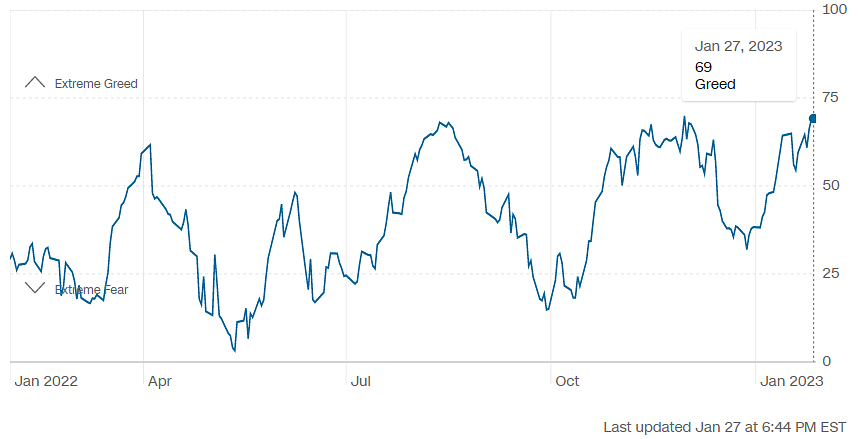 To explain, the blue line above tracks CNN’s Fear & Greed Index. If you analyze the right side of the chart, you can see greed reigns as the bulls expect more gains. However, these sentiment extremes often mark short to medium-term peaks, because when everyone is all-in, there is no one left to buy. Then, the bullish bets unwind, asset prices fall, and the blue line declines dramatically.
To explain, the blue line above tracks CNN’s Fear & Greed Index. If you analyze the right side of the chart, you can see greed reigns as the bulls expect more gains. However, these sentiment extremes often mark short to medium-term peaks, because when everyone is all-in, there is no one left to buy. Then, the bullish bets unwind, asset prices fall, and the blue line declines dramatically.
As further evidence, data from Morgan Stanley signals a similar outcome.
Please see below:
To explain, Morgan Stanley’s Global Risk Demand Index has reached the greed threshold, and periods of exuberance often result in sharp reversions. Again, it’s a contrarian indicator, and when optimism is too bullish, the ramifications are often bearish.
Furthermore, while the recent optimism (greed) has been driven by the belief that inflation will fall linearly and the Fed will pivot soon, the fundamentals contrast this narrative. Visa – the largest U.S. credit card issuer – released its first-quarter earnings on Jan. 26. CFO Vasant Prabhu said during the Q1 conference call:
“In total spend, it's remarkable stability. What's happening is as goods spending slowed down a bit, services spending really took up all the slack; and so, consumers have just shifted their spending but they're spending the same amount, and that's why debit has stayed resilient (...).
“Some people were worried that when things settle down, that debit might start to see some slowdown. But as you've seen, debit has stayed resilient even as credit has recovered, which has kept our overall payment volumes very stable.”
Please see below:
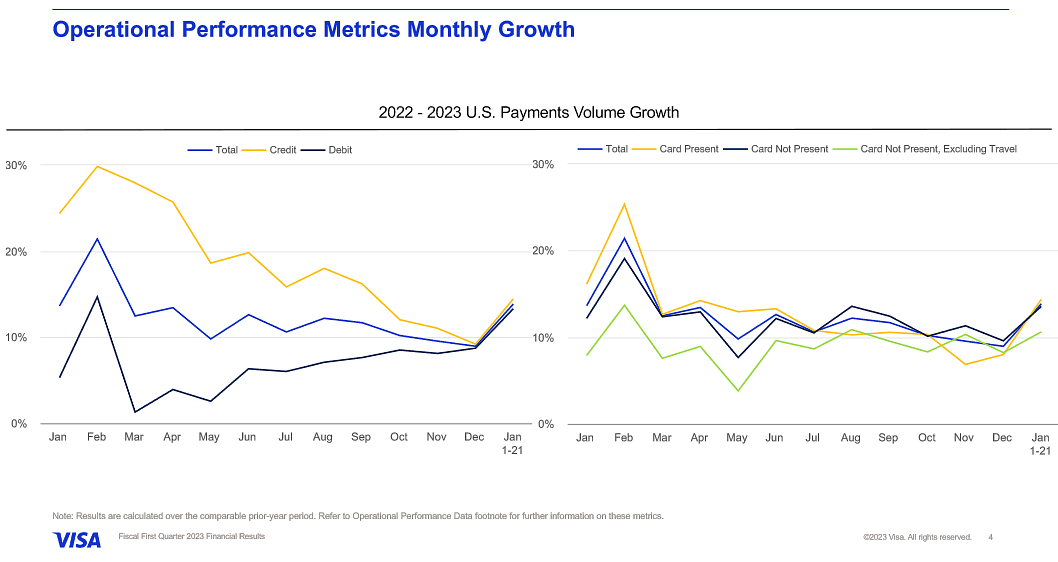 To explain, the yellow and dark blue lines on the left chart above track the payment volume growth of Visa’s credit and debit customers. If you analyze the performance, you can see that positive YoY growth was present throughout 2022 and that the dark blue line has been in an uptrend since March.
To explain, the yellow and dark blue lines on the left chart above track the payment volume growth of Visa’s credit and debit customers. If you analyze the performance, you can see that positive YoY growth was present throughout 2022 and that the dark blue line has been in an uptrend since March.
Therefore, while the crowd assumed (and still does) that Americans would run out of cash, Prabhu noted that “debit has stayed resilient even as credit has recovered.” Moreover, we warned this would occur throughout 2022 and wrote on Dec. 13:
While the FFR has surged in 2022 and the crowd still assumes that demand will collapse, the Fed revealed on Dec. 9 that U.S. households have a record ~$4.95 trillion (as of Q3 2022) in their checking and/or demand deposit accounts, which is 379% more than Q4 2019 and 6.3% more than Q2 2022.
Please see below:
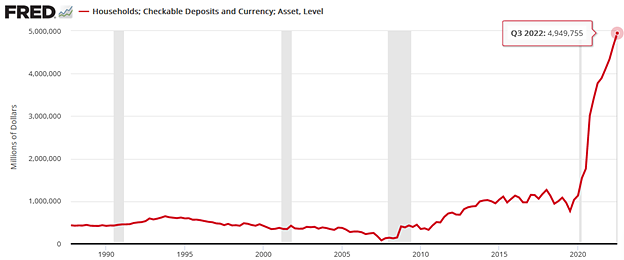 While investors wait for a destitute consumer to reduce inflation and allow the Fed to pivot, the vertical ascent on the right side of the chart above highlights the profound stimulus imbalance that materialized during the pandemic; and with wage growth also near an all-time high, investors are kidding themselves if they think monetary policy can return to its pre-pandemic state when Americans’ checking account balances have gone parabolic.
While investors wait for a destitute consumer to reduce inflation and allow the Fed to pivot, the vertical ascent on the right side of the chart above highlights the profound stimulus imbalance that materialized during the pandemic; and with wage growth also near an all-time high, investors are kidding themselves if they think monetary policy can return to its pre-pandemic state when Americans’ checking account balances have gone parabolic.
So, the fundamentals continue to align with our expectations, and the resiliency of consumer demand highlights why the FFR needs to rise much more than expected. As such, if rate-hike expectations rise to new highs, it could be a long way down before silver finds fundamental support.
Continuing the theme, Levi Strauss & Co. – the top denim brand in the U.S. – released its fourth-quarter earnings on Jan. 25. CEO Chip Bergh said during the Q4 conference call:
“Let me just talk to the pricing power of the brand. One of my favorite sayings is, you know a brand has good brand strength when you don't have to hold the prayer meeting to take pricing. We've taken pricing over the last 18 months to 24 months. Our AURs were up 6% for the year and that was driven fundamentally by pricing.”
He added:
“In the U.S., our DTC business broke a Q4 record with mainline and outlet stores and e-commerce each delivering record revenue. We continue to see strong momentum in traffic across our fleet, as well as strength in AURs, which increased high-single-digits versus last year.”
For context, DTC means direct-to-consumer (Levi’s online store), while AUR stands for average unit retail (measures the average selling price of Levi’s products); and with Bergh noting that AURs were up by 6% to high-single-digits alongside record DTC revenue, these are not the kind of results that create dovish pivots or 2% inflation.
Overall, investors remain in la-la land, so asset prices have not corrected much from their recent highs. But, with the fundamentals continuing to diverge from the narrative, it’s likely only a matter of time before reality returns. As a result, we believe that the silver price has much more downside than upside potential in the months ahead.
Will greed catch up to the bulls in the days and weeks ahead? How can inflation hit 2% if S&P 500 companies still see resilient demand? What are the odds of a pivot in mid-2023?
The Bottom Line
With a data deluge poised to amplify volatility this week, the sentiment swings could be drastic. However, the PMs’ medium-term paths remain on track, and the technicals and the fundamentals have not deviated from our expectations. Consequently, while risk assets have risen, we expect these bear market rallies to fail and culminate with new lows.
In conclusion, while the PMs declined on Jan. 29, they remain well above their fundamental values. In contrast, interest rates are too low to curb inflation, and the USD Index looks to be building a base in anticipation of its next upswing. As such, a reversal of fortunes should occur in the months ahead.
Overview of the Upcoming Part of the Decline
- It seems to me that the corrective upswing is over (or about to be over) and that the next big move lower is already underway (or that it’s about to start).
- If we see a situation where miners slide in a meaningful and volatile way while silver doesn’t (it just declines moderately), I plan to – once again – switch from short positions in miners to short positions in silver. At this time, it’s too early to say at what price levels this could take place and if we get this kind of opportunity at all – perhaps with gold prices close to $1,500 - $1,550.
- I plan to switch from the short positions in junior mining stocks or silver (whichever I’ll have at that moment) to long positions in junior mining stocks when gold / mining stocks move to their 2020 lows (approximately). While I’m probably not going to write about it at this stage yet, this is when some investors might consider getting back in with their long-term investing capital (or perhaps 1/3 or 1/2 thereof).
- I plan to return to short positions in junior mining stocks after a rebound – and the rebound could take gold from about $1,450 to about $1,550, and it could take the GDXJ from about $20 to about $24. In other words, I’m currently planning to go long when GDXJ is close to $20 (which might take place when gold is close to $1,450), and I’m planning to exit this long position and re-enter the short position once we see a corrective rally to $24 in the GDXJ (which might take place when gold is close to $1,550).
- I plan to exit all remaining short positions once gold shows substantial strength relative to the USD Index while the latter is still rallying. This may be the case with gold prices close to $1,400 and GDXJ close to $15 . This moment (when gold performs very strongly against the rallying USD and miners are strong relative to gold after its substantial decline) is likely to be the best entry point for long-term investments, in my view. This can also happen with gold close to $1,400, but at the moment it’s too early to say with certainty.
- The above is based on the information available today, and it might change in the following days/weeks.
You will find my general overview of the outlook for gold on the chart below:
Please note that the above timing details are relatively broad and “for general overview only” – so that you know more or less what I think and how volatile I think the moves are likely to be – on an approximate basis. These time targets are not binding nor clear enough for me to think that they should be used for purchasing options, warrants, or similar instruments.
Letters to the Editor
We received a few messages over e-mail, but as we are moving to our new platform, we will be transferring them below the articles as comments – and that’s where we’ll be replying to them.
Asking your questions below the articles or in the spaces called “Ask the Community” or “Position Sizes” directly will help us deliver a reply sooner. In some cases, someone from the community might reply and help even before we do.
Please remember about the Pillars of our Community, especially about the Kindness of Speech Pillar.
Also, if there’s anything that you’re unhappy with, it’s best to send us a message at [email protected].
Please note that this section is going to go away within the next 1-8 weeks, as you can add comments/questions below the article on Golden Meadow – the platform that we’re using to provide our analyses. Your notification e-mails include an invitation link that allows you to access the “Gold Trading Alerts” space.
Also, if you haven’t had the chance to see the video, in which I’m talking about the new platform and why we essentially moved from Sunshine Profits to Golden Meadow, I strongly encourage you to do so:
Summary
Summing up, it seems that the major bottom in the USD Index is in (or at hand), while the correction in stocks, gold, silver, and mining stocks is over – or very close to being over.
Gold and silver correct about 61.8% of their 2022 decline, while junior miners corrected a bit more than 50% of the decline, but not more than 61.8% thereof. This is exactly how the big 2021 and 2022 declines in junior miners started.
Given the above, gold’s very long-term resistance (the 2011 high!) and the situation in the USD Index, it seems that the next big move lower in the precious metals sector is about to start.
Now, as more investors realize that interest rates will have to rise sooner than expected, the prices of precious metals and mining stocks (as well as other stocks) are likely to fall. In my opinion, the current trading position is going to become profitable in the following weeks, and quite possibly in the following days. And while I can’t promise any kind of performance, I fully expect it to become very profitable before it’s over and to prolong our 2022 winning streak.
After the final sell-off (that takes gold to about $1,350-$1,500), I expect the precious metals to rally significantly. The final part of the decline might take as little as 1-5 weeks, so it's important to stay alert to any changes.
As always, we'll keep you – our subscribers – informed.
To summarize:
Trading capital (supplementary part of the portfolio; our opinion): Full speculative short positions (300% of the full position) in junior mining stocks are justified from the risk to reward point of view with the following binding exit profit-take price levels:
Mining stocks (price levels for the GDXJ ETF): binding profit-take exit price: $20.32; stop-loss: none (the volatility is too big to justify a stop-loss order in case of this particular trade)
Alternatively, if one seeks leverage, we’re providing the binding profit-take levels for the JDST (2x leveraged). The binding profit-take level for the JDST: $22.87; stop-loss for the JDST: none (the volatility is too big to justify a SL order in case of this particular trade).
For-your-information targets (our opinion; we continue to think that mining stocks are the preferred way of taking advantage of the upcoming price move, but if for whatever reason one wants / has to use silver or gold for this trade, we are providing the details anyway.):
Silver futures downside profit-take exit price: $14.32
SLV profit-take exit price: $13.42
ZSL profit-take exit price: $48.87
Gold futures downside profit-take exit price: $1,504
HGD.TO – alternative (Canadian) 2x inverse leveraged gold stocks ETF – the upside profit-take exit price: $16.47
HZD.TO – alternative (Canadian) 2x inverse leveraged silver ETF – the upside profit-take exit price: $36.87
Long-term capital (core part of the portfolio; our opinion): No positions (in other words: cash)
Insurance capital (core part of the portfolio; our opinion): Full position
Whether you’ve already subscribed or not, we encourage you to find out how to make the most of our alerts and read our replies to the most common alert-and-gold-trading-related-questions.
Please note that we describe the situation for the day that the alert is posted in the trading section. In other words, if we are writing about a speculative position, it means that it is up-to-date on the day it was posted. We are also featuring the initial target prices to decide whether keeping a position on a given day is in tune with your approach (some moves are too small for medium-term traders, and some might appear too big for day-traders).
Additionally, you might want to read why our stop-loss orders are usually relatively far from the current price.
Please note that a full position doesn't mean using all of the capital for a given trade. You will find details on our thoughts on gold portfolio structuring in the Key Insights section on our website.
As a reminder - "initial target price" means exactly that - an "initial" one. It's not a price level at which we suggest closing positions. If this becomes the case (as it did in the previous trade), we will refer to these levels as levels of exit orders (exactly as we've done previously). Stop-loss levels, however, are naturally not "initial", but something that, in our opinion, might be entered as an order.
Since it is impossible to synchronize target prices and stop-loss levels for all the ETFs and ETNs with the main markets that we provide these levels for (gold, silver and mining stocks - the GDX ETF), the stop-loss levels and target prices for other ETNs and ETF (among other: UGL, GLL, AGQ, ZSL, NUGT, DUST, JNUG, JDST) are provided as supplementary, and not as "final". This means that if a stop-loss or a target level is reached for any of the "additional instruments" (GLL for instance), but not for the "main instrument" (gold in this case), we will view positions in both gold and GLL as still open and the stop-loss for GLL would have to be moved lower. On the other hand, if gold moves to a stop-loss level but GLL doesn't, then we will view both positions (in gold and GLL) as closed. In other words, since it's not possible to be 100% certain that each related instrument moves to a given level when the underlying instrument does, we can't provide levels that would be binding. The levels that we do provide are our best estimate of the levels that will correspond to the levels in the underlying assets, but it will be the underlying assets that one will need to focus on regarding the signs pointing to closing a given position or keeping it open. We might adjust the levels in the "additional instruments" without adjusting the levels in the "main instruments", which will simply mean that we have improved our estimation of these levels, not that we changed our outlook on the markets. We are already working on a tool that would update these levels daily for the most popular ETFs, ETNs and individual mining stocks.
Our preferred ways to invest in and to trade gold along with the reasoning can be found in the how to buy gold section. Furthermore, our preferred ETFs and ETNs can be found in our Gold & Silver ETF Ranking.
As a reminder, Gold & Silver Trading Alerts are posted before or on each trading day (we usually post them before the opening bell, but we don't promise doing that each day). If there's anything urgent, we will send you an additional small alert before posting the main one.
Thank you.
Przemyslaw K. Radomski, CFA
Founder, Editor-in-chief



